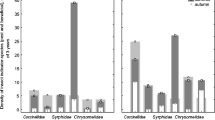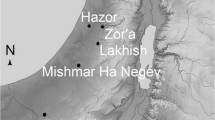Abstract
Apple orchards are agro-ecosystems managed with high levels of inputs and especially pesticides. Epigeal spider communities were sampled in three seasons using pitfall traps in 19 apple orchards with four different management strategies (abandoned, under organic, Integrated Pest Management or conventional protection) and thus significantly different pesticide usage. The abundance and diversity of the spider communities was the highest in abandoned orchards. Higher diversity and evenness values were the only difference in spider communities from the organic orchards compared to the other commercial orchards. The analysis of five ecological traits (proportion of aeronauts, type of diet, overwintering stages, body size and maternal care), however, clearly showed differences in the spiders from the organic orchards. The spider species in the other commercial orchards were smaller and have higher dispersal abilities. Seven bioindicator species were identified in abandoned orchards, two species in organic ones (only Lycosidae) and one species in conventional orchards (Linyphiidae).



Similar content being viewed by others
References
Bahlai CA, Xue Y, Mc Creary CM, Schaafsma AW, Hallett RH (2010) Choosing organic pesticides over synthetic pesticides may not mitigate environmental risks in soybeans. PLoS One. doi:10.1371/journal.pone.0011250
Bajwa WI, Aliniazee MT (2001) Spider fauna in apple ecosystem of western Oregon and its field susceptibility to chemical and microbial insecticides. J Econ Entomol 94:68–75
Bell JR, Bohan DA, Shaw EM, Weyman GS (2005) Ballooning dispersal using silk: world fauna, phylogenies, genetics and models. Bull Entomol Res 95:69–114
Bengtsson J, Ahnstrom J, Weibull AC (2005) The effects of organic agriculture on biodiversity and abundance: a meta-analysis. J Appl Ecol 42:261–269
Bonte D, Baert L, Lens L, Maelfait JP (2004) Effects of aerial dispersal, habitat specialisation and landscape structure on spider distribution across fragmented grey dunes. Ecography 27:343–349
Bonte D, Lens L, Maelfait JP (2006) Sand dynamics in coastal dune landscapes constrain diversity and life-history characteristics of spiders. J Appl Ecol 43:735–747
Cardenas M, Ruano F, Garcia P, Pascual F, Campos M (2006) Impact of agricultural management on spider populations in the canopy of olive tress. Biol Control 38:188–195
Chevenet F, Doledec S, Chessel D (1994) A fuzzy coding approach for the analysis of long-term ecological data. Freshw Biol 31:295–309
Codron JM, Habib R, Jacquet F, Sauphanor B (2003) Bilan et perspectives environnementales de la filière arboriculture fruitière. In: Dron D (ed) Agriculture, territoire, environnement dans les politiques européennes. Dossiers de l’Environnement de l’INRA 23, pp 31–67
Cristofoli S, Mahy G, Kekenbosh R, Lambeets K (2010) Spider communities as evaluation tools for wet heatland restoration. Ecol Indic 10:773–780
Croft BA (1982) Arthropod resistance to insecticides: a key to pest control failures and successes in North American apple orchards. Entomol Exp Appl 31:88–110
Crowder DW, Northfield TD, Strand MR, Snyder WE (2010) Organic agriculture promotes evenness and natural pest control. Nature 466:109–123
Dufrêne M, Legendre P (1997) Species assemblages and indicator species: the need for a flexible asymmetrical approach. Ecol Monogr 67:345–366
Feber RE, Bell J, Johnston PJ, Firbank LG, Macdonald DW (1998) The effects of organic farming on surface-active spider (Aranea) assemblages in wheat in southern England, UK. J Arachnol 26:190–202
Field JG, Clarke KR, Warwick RM (1982) A practical strategy for analysing multispecies distribution patterns. Mar Ecol Prog Ser 8:37–52
Foelix RF (2011) Biology of spiders. Oxford University Press, New York
Glück E, Ingrisch S (1990) The effect of biodynamics and conventional agriculture management on Erigoninae and Lycosidae spiders. J Appl Entomol 110:136–148
Greenstone MH, Morgan CE, Hultsh A-L (1987) Ballooning spiders in Missouri, USA, and New South Wales, Australia: family and mass distributions. J Arachnol 15:163–170
Halley JM, Thomas CFG, Jepson PC (1996) A model for the spatial dynamics of linyphiid spiders in farmland. J Appl Ecol 33:471–492
Hedde M, Pey B, Auclerc A, Capowiez Y, Cluzeau D, Cortet J et al (2012a) BETSI, a complete framework for studying soil invertebrate functional traits. XVI ICSZ—International Colloquium on Soil Zoology, Coimbra
Hedde M, van Oort F, Lamy I (2012b) Functional traits of soil invertebrates as indicators for exposure to soil disturbance. Environ Pollut 164:59–65
Hedde M, van Oort F, Renouf E, Thénard J, Lamy I (2013) Dynamics of soil fauna after plantation of perennial energy crops on polluted soils. Appl Soil Ecol 66:29–39
Herrmann JD, Bailey D, Hofer G, Herzog F, Schmidt-Entling MH (2010) Spiders associated with meadow and tree canopies of orchards respond differently to habitat fragmentation. Landsc Ecol 25:1375–1384
Hole DG, Perkins AJ, Wilson JD, Evans AD (2005) Does organic farming benefit biodiversity? Biol Conserv 122:113–130
Jørgensen LN (1999) Denmark’s action plans for pesticides: status and role of research. Nord Jordbrugsforsk 81:201–202
Laliberté E, Shipley B (2011) FD: measuring functional diversity from multiple traits, and other tools for functional ecology. R package version 1.0-11
Lambeets K, Hendrickx K, Vanacker S, Van Looy K, Maelfait JP, Bonte D (2008) Assemblage structure and conservation value of spiders and carabid beetles from restored lowland river banks. Biodivers Conserv 17:3133–3148
Lambeets K, Vandegehuchte ML, Maelfait JP, Bonte D (2009) Integrating environmental conditions and functional life-history traits for riparian arthropods conservation planning. Biol Conserv 142:625–637
Langellotto GA, Denno RF (2004) Responses of invertebrate natural enemies to complex-structured habitats: a meta-analytical synthesis. Oecologia 139:1–10
Langlands PR, Brennan KEC, Frameneau VW, Main BY (2011) Predicting the post-fire responses of animal assemblages: testing a trait-based approach using spider. J Anim Ecol 80:558–568
Lavorel S, Grigulis K, McIntyre S, Williams NSG, Garden D, Dorrough J, Berman S, Quetier F, Thebault A, Bonis A (2008) Assessing functional diversity in the field—methodology matters! Funct Ecol 22:134–147
Lemke A, Poehling H-M (2002) Sown weed strips in cereal fields: overwintering site and “source” habitat for Oedothorax apicatus (Blackwall) and Erigone atra (Blackwall) (Araneae: Erigonidae). Agric Ecosyst Environ 90:67–80
LePeru B (2006) Catalogue et repartition des Araignées de France. Rev Arachnol 16:1–468
LeViol I, Julliard R, Kerbiriou C, Redon L, Carnino N, Machon N, Porcher E (2008) Plant and spider communities benefit differently from the presence of planted hedgerows in highway verges. Biol Conserv 141:1581–1590
Marc P, Canard A, Ysnel F (1999) Spiders (Araneae) useful for pest limitation and bioindication. Agric Ecosyst Environ 74:229–273
Marko V, Keresztes B, Fountain MT, Cross JV (2009) Prey availability, pesticides and the abundance of orchard spider communities. Biol Control 48:115–124
McArdle BH, Anderson MJ (2001) Fitting multivariate models to community data: a comment on distance-based redundancy analysis. Ecol 82:290–297
Minarro M, Espadaler X, Melero VX, Suarez-Alvarez V (2009) Organic versus conventional management in an apple orchard: effects of fertilization and tree-row management on ground-dwelling predaceous arthropods. Agric For Entomol 11:133–142
Nentwig W (2003) Management of biodiversity in agroecosystems. Basic Appl Ecol 4:105–106
Nentwig W (2013) Ecophysiology of spiders. Springer-Verlag, Berlin
Nyffeler M, Sunderland KD (2003) Composition, abundance and pest control potential of spider communities in agroecosystems: a comparison of european and US studies. Agric Ecosyst Environ 95:579–612
Oksanen J, Blanchet FG, Kindt R, Legendre P, O’Hara RB, Simpson GL, Solymos P, Stevens MHH, Wagner H (2011) Vegan: community ecology package. R package version 1.17-7
Park YC, Joo JS, Kim JP (2007) Diversity of spider communities in a pesticide-treated pine (Pinus densiflora) forest. J Ecol Field Biol 30:179–186
Pekar S (2012) Spiders in the pesticide world: an ecotoxicological review. Pest Manag Sci 68:1438–1446
Pekar S, Koucourek F (2004) Spider (Araneae) in the biological and integrated pest management of apple in Czech Republic. J Appl Entomol 128:561–566
Pfiffner L, Luka H (2003) Effects of low-input farming systems on carabids and epigeal spiders—a paired farm approach. Basic Appl Ecol 4:117–127
Pinheiro J, Bates D, DebRoy S, Sarkar D and the R Development Core Team (2011) Nlme: linear and nonlinear mixed effects models. R package version 3.1-113
Platnick NI (2012) The world spider catalog, version 13.0. American Museum of Natural History. doi:10.5531/db.iz.0001
Prieto-Benitez S, Mendez M (2011) Effect of land management on the abundance and richness of spiders (Aranea): a meta-analysis. Biol Conserv 144:683–691
Ribera I, Doledec S, Downie IS, Foster GN (2001) Effect of land disturbance and stress on species traits of ground beetle assemblages. Ecology 82:1112–1129
Roberts MJ (1996) Spiders of Britain and Northern Europe. Harper Collins, London
Santos SAP, Pereira JA, Torres LM, Nogueira AJA (2007) Evaluation of the effects on canopy arthropods of two agricultural management systems to control pests in olive groves from the north-east of Portugal. Chemosphere 67:131–139
Sauphanor B, Dirwimmer C, Boutin S, Chaussabel AL, Dupont N, Fauriel J, Gallia V, Lambert N, Navarro E, Parisi L, Plenet D, Ricaud V, Sagnes JL, Sauvaitre D, Simon S, Speich P, Zavagli F (2009) Analyse comparative de différents systèmes en arboriculture fruitière. In: INRA (Ed), Ecophyto R&D: vers des systèmes de culture économes en produits phytosanitaires. Rapport d’expertise, Tome IV, INRA, Paris
Sauphanor B, Severac G, Maugin S, Toubon J-F, Capowiez Y (2012) Exclusion netting may alter reproduction of the codling moth (Cydia pomonella) and prevent associated fruit damage to apple orchards. Entomol Exp Appl 145:134–142
Schmidt MH, Thies C, Nentwig W, Tscharntke T (2008) Contrasting responses of arable spiders to the landscape matrix at different spatial scales. J Biogeogr 35:155–166
Topping CJ, Sunderland KD (1994) A spatial population-dynamics model for Leptyphantes-tenuis (Araneae, Linyphiidae) with some simulations of the spatial and temporal effects of farming opérations and land-use. Agric Ecosyst Environ 48:203–217
Violle C, Navas ML, Vile D, Kazakou E, Fortunel C, Hummel I, Garnier E (2007) Let the concept of trait be functional. Oikos 116:882–892
Wilson EO (1975) The adequacy of body size as a niche différence. Am Nat 109:769–784
Wise D (1995) Spiders in ecological webs. Cambridge University Press, Cambridge
Wisniewska J, Prokopy RJ (1997) Pesticide effect on faunal composition, abundance, and body length of spiders (Araneae) in apple orchards. Environ Entomol 26:763–776
Acknowledgments
The authors warmly thanked the producers and owners for allowing them to sample spiders in their orchards. This study is dedicated to the memory of P. R., one of the producers, who committed suicide in 2012. The authors also wish to thank our colleagues participating in the BETSI project (funded by the French Foundation for Biodiversity) for valuable discussions on trait-based approaches.
Conflict of interest
The authors declare that they have no conflict of interest.
Author information
Authors and Affiliations
Corresponding author
Rights and permissions
About this article
Cite this article
Mazzia, C., Pasquet, A., Caro, G. et al. The impact of management strategies in apple orchards on the structural and functional diversity of epigeal spiders. Ecotoxicology 24, 616–625 (2015). https://doi.org/10.1007/s10646-014-1409-1
Accepted:
Published:
Issue Date:
DOI: https://doi.org/10.1007/s10646-014-1409-1




